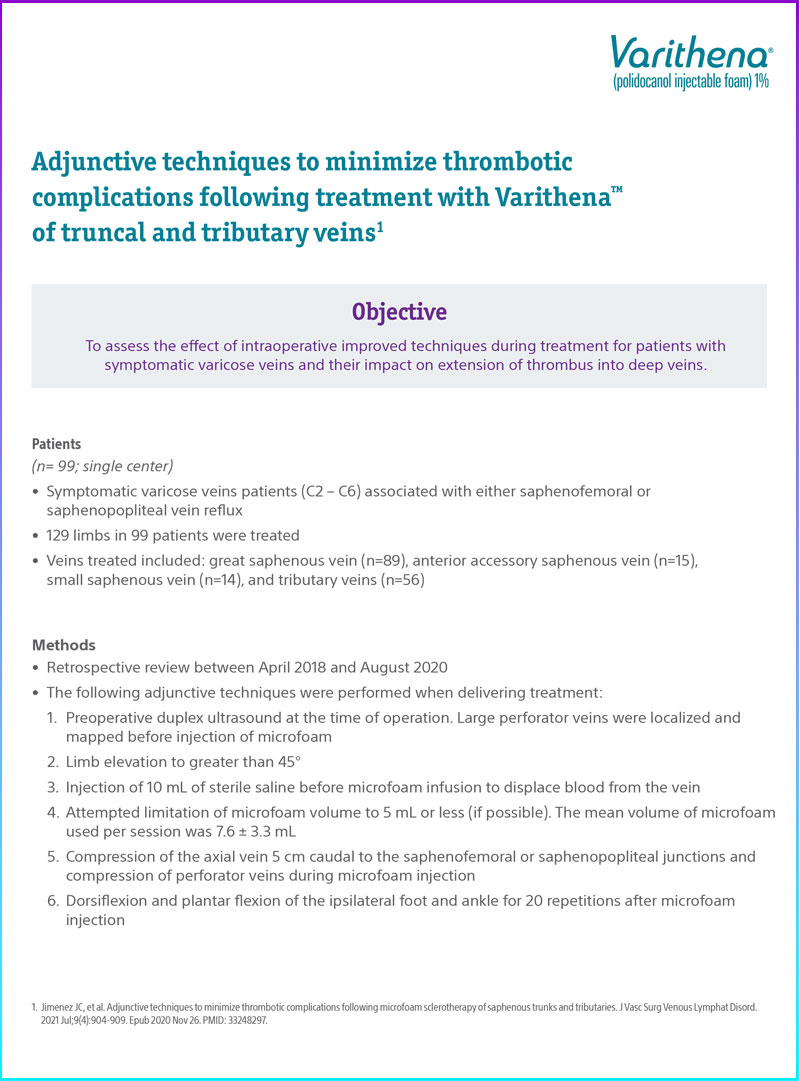Comparison of Adverse Thrombotic Events (ATE’s) Across Studies
| Study | Common femoral or popliteal extension | Other deep venous thrombosis | % of total ATE's in study | Symptomatic | Patients with ATE's anticoagulated |
|---|---|---|---|---|---|
| VANISH-12 | 5.5% | 3.3% | 8.8% | 22% | Not stated |
| VANISH-23 | 3.9% | 6.6% | 10.5% | 33% | 50% |
| Jimenez, et al | 1.5% | 1.5% | 3.0% | 0.78% | 100% |
Study limitations
- Non-randomized, retrospective review
- Short period of follow up
References
* Femoropopliteal DVT occurred 4 months after microfoam injection following a long-haul airplane flight. She was later found to be heterozygous for Factor V Leiden.
1. Jimenez JC, et al. Adjunctive techniques to minimize thrombotic complications following microfoam sclerotherapy of saphenous trunks and tributaries. J Vasc Surg Venous Lymphat Disord. 2021 Jul;9(4):904-909. Epub 2020 Nov 26. PMID: 33248297.
2. King JT, O’Byrne M, Vasquez M, Wright D; VANISH-1 Investigator Group. Treatment of Truncal Incompetence and Varicose Veins with a Single Administration of a New Polidocanol Endovenous Microfoam Preparation Improves Symptoms and Appearance. Eur J Vasc Endovasc Surg. 2015 Dec;50(6):784-93. Epub 2015 Sep 16. PMID: 26384639.
3. Todd KL 3rd, Wright DI; VANISH-2 Investigator Group. The VANISH-2 study: a randomized, blinded, multicenter study to evaluate the efficacy and safety of polidocanol endovenous microfoam 0.5% and 1.0% compared with placebo for the treatment of saphenofemoral junction incompetence. Phlebology. 2014 Oct;29(9):608-18. Epub 2013 Jul 17. PMID: 23864535.
